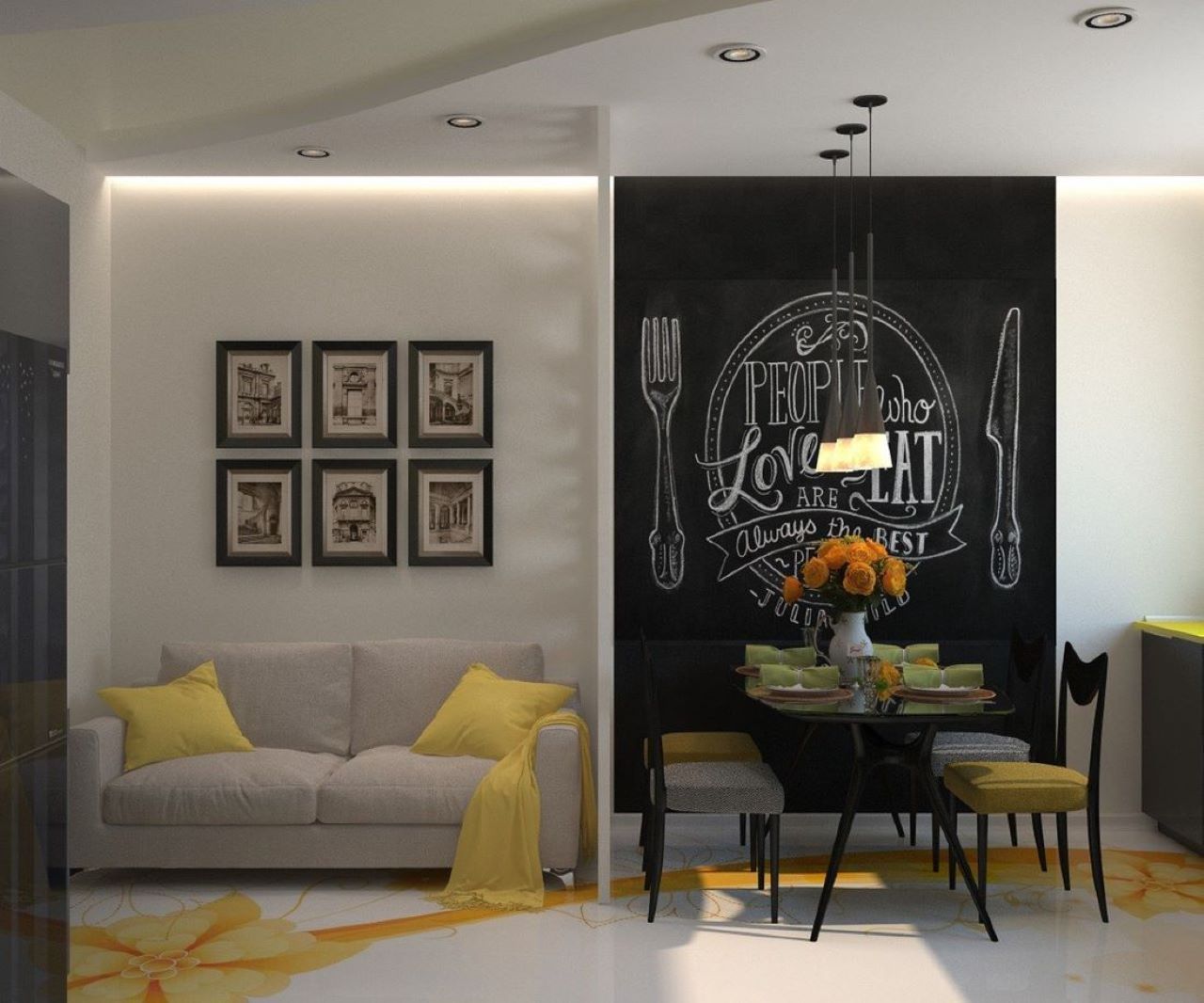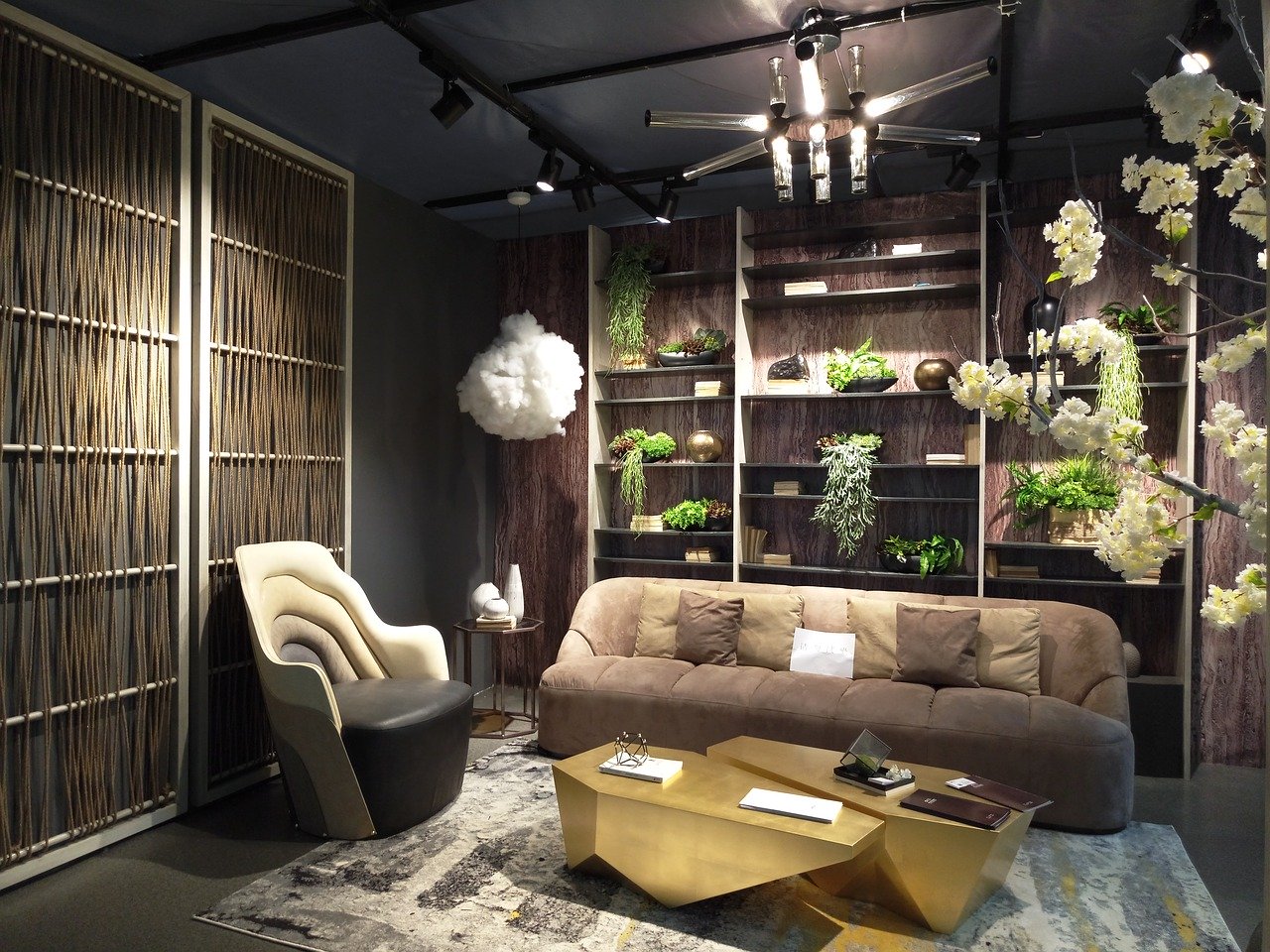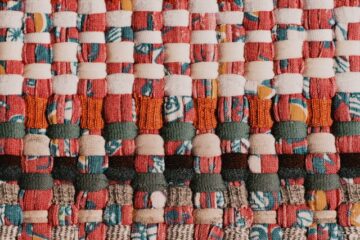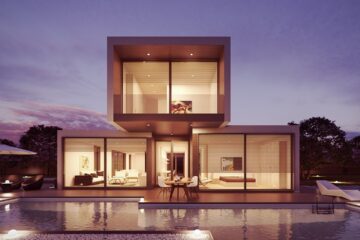Balance in interior design
Humans have a need for balance. Our brain can process repeating patterns more effortlessly, so symmetry is easier for us to understand, that’s why we find it more satisfying. The Golden Ratio can be found everywhere in nature, including the human body.
In interiors balance creates a sense of equilibrium, repose, order. There are 3 types of balance. By combining the 3 we can establish visual interest.
Symmetrical balance, when identical items are mirrored on each side of a central line, can bring a feeling of formality, stability. It shouldn’t become dull, and that’s why asymmetrical balance plays such an important role.
Here harmony is achieved by visual interest generated between different elements with similar visual weight. (The visual heaviness or lightness of objects are determined by their shape, size, color, texture. Complex, larger, darker, highly textured items appear heavier visually.) The unexpected can spark surprise and will keep the attention for longer. It’s more dynamic and informal.
When the elements of the design radiate from a central point- outward or inward- radial balance is accomplished.
Keep it simple and uncluttered
The impact of clutter, dirt and mess on the subconscious is underestimated by many people.
Decluttering and cleaning, getting rid of the excess, the negative, whatever drains your energy should be your starting point.
Organizing (storage is crucial!) will set you up for enjoying a stress-free environment.
Uncluttered doesn’t mean boring!
“Mismatching” can bring into your abode loads of interior décor ideas.
There are fun ways to generate a cohesive look:
-One color with one or two accent colors
-Choosing one or two materials
-Grouping patterns or collectibles together gives the feel that it’s a conscious design choice
-Same material objects from different eras
-Focusing on one era.
Rearrange your furniture
Consider the function and size of the items and the areas where you’re placing them. Check where natural light is coming from. Pick a focal point (it may be there already) and put furniture around it, accentuating it with lights. Brightly lit areas attract more attention. Rugs and wall color/ décor can help you with anchoring the areas. Arrange sofas, chairs and coffee tables into conversation areas, not in straight lines. Make sure that people can move around comfortably.
The size of the room will tell you where storage can go. Better close to the walls and spreading upwards in small places.
Counterbalance a large object by grouping small objects together.
Balance colors
Look at the individual characteristics of colors when choosing. And the fact that light can emphasize colors.
Color changes how we perceive the proportions and the atmosphere of a room. (Yellow- energetic, red- active, green- growth, blue- responsible.)
Relying on the color wheel to pick combinations and sticking with the 60-30-10 rule is a good idea. 60% of the main color, 30% of the secondary, supportive color and 10% of the accent color, to stimulate excitement.
Stay away from one bold color on a big wall surface, so it doesn’t become overwhelming.
Neutrals are safe to rely on when you are creating a serene ambiance. They can balance your color story if playing with bolder colors.
Décor objects show accent colors in fun, exciting ways.
White is amazing to freshen things up, and as a backdrop that helps patterns and colors pop.
Balance patterns
Mixing patterns in different scales can be so much fun. Just stay with a few colors, so things don’t get out of balance.
Why not start with picking an ethnic pillow or a rug and build the pattern story of a whole room around it? Layering patterns creates a harmonious look.
Be careful with large patterns in a small room, you don’t want them to take over.
The optical effects are super important. For example, vertical lines heighten, horizontal lines widen the space.
Another way to achieve a cohesive look is using colors that are found in the patterns all over the room.
If you use a pattern in repeat (like a simple geometric), counterbalance it with a more complex shaped item (like a bold sculpture).
A 2020’s trend is to incorporate nature patterns into your interior. So how about choosing a beautiful botanical motif as the focal point to uplift your space and your spirit?
Surprise yourself and spruce up that forgotten nook with a whimsical wallpaper.
Balance textures
Texture makes your design experience tactile, adds to your feeling of comfort, warmth. Layering textures is an excellent way of giving zest to monochrome designs.
Deeply textured elements make your space feel more intimate, while smooth surfaces are sleek.
Direct light enhances texture.
If you want your space to look bigger, have shiny, reflective surfaces, so more light can bounce around.
Not only pillows or rugs represent texture, but wooden chairs, plants, books even.
Don’t overcrowd the interior with too many textures.
Credit: V. Borodinova, Pixabay Database
5 Elements and Yin-Yang balance
With the help of feng shui you can address balance on a deeper, more powerful level to empower your space and yourself.
The balance of nature’s 5 elements (Water, Wood, Fire, Earth, Metal) and the balance of yin-yang (the feminine and the masculine) in one’s space ensure good energy flow in one’s life.
Certain materials, colors, shapes represent the 5 elements. Here are some examples:
Water: fountains; black, midnight blue; undulating.
Wood: plants; greens, blues; columns, stripes.
Fire: lighting; red; triangle, pyramid.
Earth: ceramics; yellow, earthy tones; square, rectangle, cube.
Metal: steel, iron…; white; round, oval, arch, dome.
Yin and yang are 2 interchangeable forces in the natural world. They interact continuously and cannot exist independently. The 2 halves together make the whole. Moon-sun, female-male, receptive-active, quiet-loud, night-day, negative-positive, dark-light, soft-hard, bottom-top, downward- upward, flexible-rigid.
Each area in the space needs to be examined and lights, colors, furniture, shapes, surfaces, textures chosen according to the energy being active or passive. (The bedroom or the bathroom need more yin energy than the living room or the entrance, for example.)
Here are certain design elements that represent feminine and masculine design. If one of them is overwhelming in your space, bring in more of the other for balance.
Feminine design:
- muted colors
- ambient lighting
- curved lines
- carpeted floors
- wallpaper
- florals, damask
- less windows
- curtains
- decorative accessories
- soft textures.
Masculine design:
- vibrant colors
- more light
- linear furniture
- hardwood floors
- painted walls
- stripes, plaids
- many windows
- shutters, blinds, shades
- bold art
- leather, concrete, steel.
Surround yourself with items that hold positive energy
To remove negative energy from your space: declutter, clean, air and smudge regularly.
Have relaxing and inspirational objects and artwork around, even a vision board. Strictly items you love.
Good luck symbols hold positive energy: bamboos, elephants, tortoises, the color red, the Hamsa hand, fish, crystals, plants, dream catchers, Buddha statues, flowers, horseshoes, fruit bowls, the Om symbol, peacock feathers, wind chimes, small fountains, salt lamps,…
Certain design details enhance auspicious energy flowing into your space and into your life
Your front door should be uncluttered and well lit. Place plants here to draw positive energy.
Energy should flow freely through the hallway.
Make sure fire doesn’t clash with water in your kitchen by installing the stove away from the sink. Everything must be in good working order.
In the bedroom have your headboard against a solid wall. No clutter under or at the foot of the bed.
Keep your bathroom sparkly clean, the door closed, the toilet lid down.
A nice mirror on the wall of the dining room that reflects the table with delicious food on it can multiply prosperity.
Furniture arrangement is key in the living room: keep in mind what activities take place here.
Make sure to take the Commanding Position at the stove, in your bed, at your desk.
Credit: Min-min, Pixabay Database
Bring nature indoors
Why? To reduce stress, blood pressure, muscle tension, heart rate; to improve your mood; to enhance your attention; to feel energized; to function better; to recover faster; to have higher self-esteem!
Ways to bring nature inside:
-bringing in plants, flowers
-having a pet
-using natural materials
-indulging in natural patterns
-applying natural colors
-adding natural textures
-showcasing gemstones and crystal
-letting the space bathe in natural light
-airing and cleaning regularly
-enjoying natural aromatherapy
-letting nature sounds fill the air.
/To read about it in more detail: see my article “Bringing nature inside”/
Be conscious about your choices
Making sure that energy flows without obstacles is crucial in your environment.
Create a sanctuary where you can recharge and that will support your goals and the authentic you. Any space can benefit from an energy uplift, but you can go further with a conscious approach towards your interior design.
Let Feng Shui guide you in the process, empower yourself.
Release your inner interior designer, take your place to the next level and enjoy!
Photo Credit for Featured Image: iStock Database
Julianna Kocsis is a Feng Shui Specialist, Organizational Expert, Intuitive Vibrational Catalyst, Textile Design Archivist. She is also the founder of Talila Consulting. Bringing Order and Harmony to your Home, Work and Life.
To book an appointment, contact Us: talilaconsulting.com/contact




